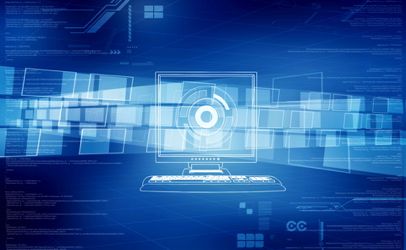— OPINION —
Food safety is a significant concern for both consumers and the food service industry. Ensuring that the food we consume is safe to eat is of utmost importance, and the application of Artificial Intelligence (AI) in the food industry has been widely recognized as a promising solution to address this issue.
Building consumer trust is an essential effort. The CDC estimates that 48 million people get sick,128,000 are hospitalized, and 3,000 die from foodborne diseases in the US each year.
As consumers continue to read frightening headlines about food recalls, foodborne illness incidents, and other food safety breaches, they’re demanding transparency more than ever before. The food industry should, therefore, continue to explore the potential applications of AI in food safety to ensure that consumers can have greater confidence that the food they consume is safe.
As AI grows more affordable and accessible for organizations of all sizes and budgets, it will become an increasingly essential tool to boost transparency, verification, validation, traceability, communication, and safety throughout the entire supply chain.
Predictive modeling and quality control
AI can help enhance food safety in several ways. Predictive modeling is one of the most prominent applications of AI in the food service industry. AI algorithms can predict potential foodborne illness outbreaks by using data gathered from various sources, such as environmental factors, ingredient quality, processing operations, and historical records of contamination. The information obtained can be used to proactively take action to prevent such outbreaks from happening.
Another way in which AI can increase food safety is through food quality control. AI algorithms can analyze images of food and packages in real-time to detect abnormalities, such as missing labels or torn packaging. This helps identify contaminated products before they reach store shelves (or consumers).
Food safety can also be enhanced through AI-powered automated food processing systems. By using sensors and cameras, these systems can detect and correct issues like temperatures, liquid levels, gas flow, humidity, and even food hygiene that could lead to food contamination during manufacturing and processing.
Additionally, AI can be used to trace the origins of food products. Using technology and AI algorithms, food producers can track food products from farm to table, providing consumers greater transparency and accountability in the food supply chain.
Ways that AI will improve food safety
Creating AI with verification and validation checkpoints is essential to improving traceability within the supply chain.
AI will improve food safety throughout the supply chain by:
- Improving communication. Good communication is a critical aspect of verification, validation, and traceability. Strong, accurate, real-time communication is essential throughout the food chain to maximize safety, transparency, and trust.
- Boosting transparency and validation. Everyone in the supply chain must understand the importance of validation and transparency and the role they play. This will help build consumer trust and confidence in the food produced.
- Making the process faster and easier. AI will minimize the number of steps it takes to get validated and the number of people suppliers must talk to during the process. As a result, more suppliers will participate.
- Reducing redundancies. AI will decrease the number of databases that companies have to work with, reducing the redundancies that come with duplicating information in each database. Since these redundancies waste time, labor, and money, AI will help the processes be more efficient, cost-effective, and streamlined, reducing administrative burden dramatically.
- Simplifying the process. The newest AI technologies make these systems simple, straightforward, and multi-faceted rather than complicated with minimal functionality. It’s time to work smarter, not harder!
Reliability and cost factors
However, as with any technology, the use of AI in food safety has its challenges. One major concern is the reliability of AI models. AI models are only as good as the data that is entered, and if the data is flawed or biased, the AI model will produce unsatisfactory results.
Additionally, there are concerns about the cost of implementing AI in the food industry and the potential for job loss due to automation. Though the use of AI in food safety should not replace human labor entirely. For example, food safety inspections and quality testing will continue to require human involvement to ensure the food meets safety standards and regulations. AI is also expected to create job opportunities in various fields, such as software engineering, data science, and quality control.
However, it’s important to note that the affordability and accessibility of AI may depend on various factors, such as the type of technology, infrastructure availability, and cost of implementation. Tech investments can also have a tremendous ROI, as AI can increase efficiency and reduce costs, and there are even currently affordable options for small businesses.
Despite these challenges, the potential benefits of using AI to enhance food safety are significant. By providing real-time monitoring, detection, and prediction, AI can help to prevent foodborne illness outbreaks, reduce food waste, improve sustainability, and enhance accountability in the food supply chain.

About the author: Francine L. Shaw, food safety specialist, podcaster, and co-founder of My Food Source, is a successful entrepreneur, author, and speaker who spent 20+ years working in the foodservice industry. Her career has included performing services (operating partner, corporate/private trainer, health inspector, 3rd party inspector, adjunct professor) in various sectors of the foodservice industry. She has written hundreds of articles for national trade magazines and appeared on Dr. Oz, the BBC World Series Radio, and iHeart Radio as a food safety expert.

